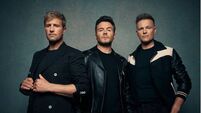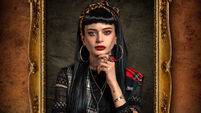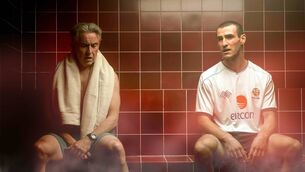The Cork-born artist creating unique sculptures using unorthodox methods
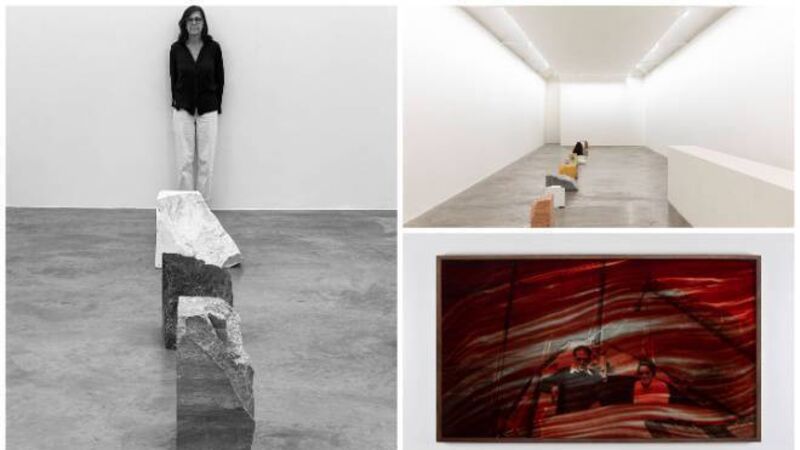
Dorothy Cross brings Veins of Other to the Kerlin Gallery in Dublin until July 6.
The Cork-born artist Dorothy Cross has — in making her unique artworks — used materials as diverse as cowhides, taxidermied sharks and birds, a human heart and an Egyptian mummy. The heart was carried up the River Lee on the Irish Navy ship the LÉ James Joyce as part of Cross’ Heartship project in 2019, while the mummy features in the artist’s Kinship project, which she hopes will come to fruition later this year.
Cross’ methods of creation are not always so unorthodox; she also works with more traditional sculptural materials, such as bronze and marble. Her fascination with marble led to an unexpected problem at her last solo exhibition, at the Frith Gallery in London in 2022. Red Erratic, the largest of her sculptures, was — at 7.5 tonnes — so heavy that the gallery floor could not bear its weight and it had to be exhibited on a flatbed truck outside the gallery, and even then, for one night only.
Cross had no such issues when preparing for her new exhibition, Veins of Other, which runs at the Kerlin Gallery in Dublin until July 6. “The exhibition space is on the third floor, so they had to hire this little robotic truck to bring the sculptures upstairs,” she says. “There are twelve pieces, but they’re small — they all weigh less than a tonne — so it was doable.”
The sculptures, collectively titled Tread, are carved from blocks of marble Cross discovered behind the Studio Carlo Nicoli in Carrara, Italy. The quarries at Carrara are renowned for the quality of their marble — Michelangelo carved most of his iconic sculptures from the white statuario produced there — but the local craftsmen also work in stone imported from all over the world.
The blocks that Cross had stumbled upon were left over from other artists’ projects. “My contact at the studio, Francesca Nicoli, told me how one of these pieces had come from China, another from Belgium, another from Brazil, and so on. I liked how each fragment of marble had a different beginning, and each has some kind of history within it.”
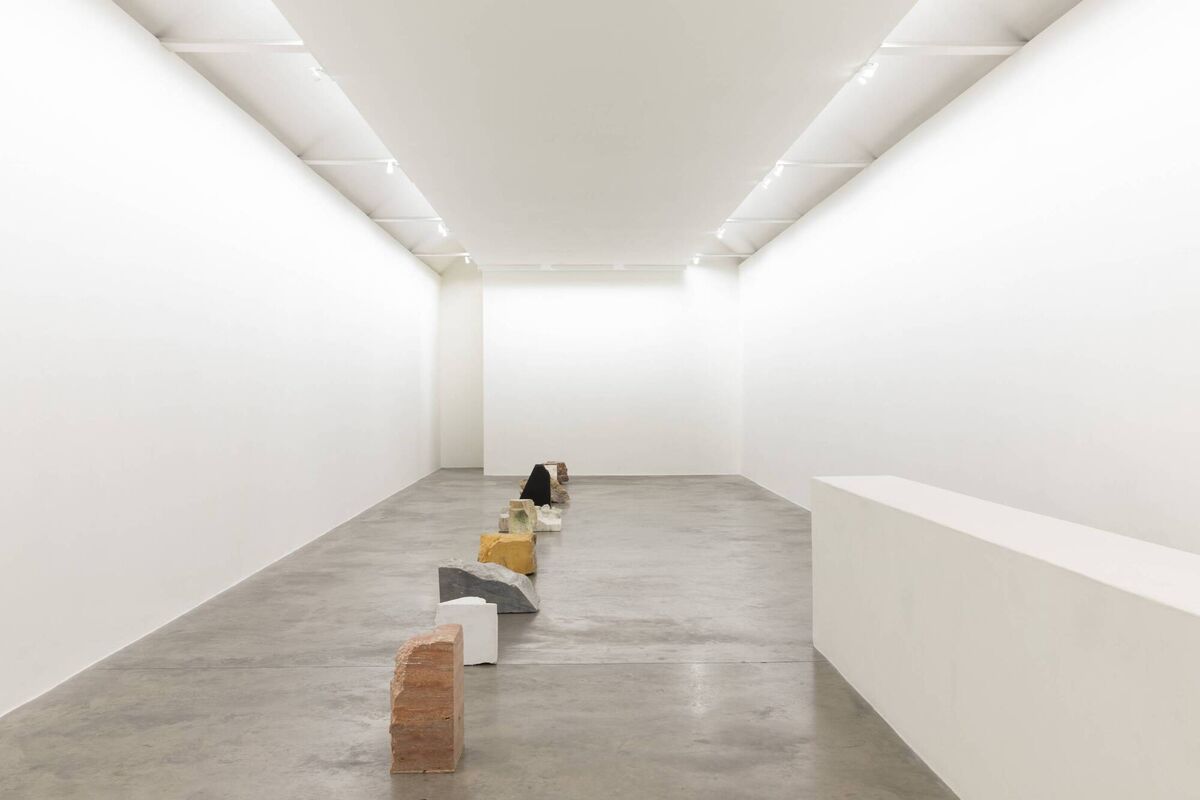
Cross’ Tread sculptures are based on plaster casts she made of people’s feet at her studio in Connemara, Co Galway. “I had the idea of these feet being embedded in the stone like they were fossils or a presentation of some sense of life that might have occurred in all these other countries over time.”
Cross employed the craftsmen at Carrara to carve the feet to her designs. “They’re the most brilliant, skilled people in the world,” she says. “They use the old point system that Michelangelo would have used. There’s no robot involved. No artificial intelligence. It’s all human skill, but sadly, it’s on the cusp of disappearing.”
The twelve pieces that comprise Tread are arranged in a straight line — “like a spine,” as Cross puts it — down the middle of the gallery.
“They have the most extraordinary colours,” she says. “And there are these veins in the marble; you can see an association with another body of work in the show, the Bloodlines series of photographs and stained glass.”
The Bloodlines series began with another of Cross’ chance discoveries. “I visited a stained glass supplier just as it was closing down,” she says. “I came upon this red-veined glass, and I thought, God, it’s so beautiful. I bought ten sheets of it. It was very expensive, but deservedly so, as the glass is hand-poured.
“I had the glass in my studio for ages. And then one day I placed one section of it over a photograph of my father and it read beautifully. But it took me another six or seven years to make a selection of my father’s photographs, and have them printed up and framed. It’s spectacular what happens when you put the photographs behind the glass. The fact that they’re my father’s probably makes them more intimate for me.”
Some of the photographs feature the Fastnet Lighthouse and the lightship that used to mark the Daunt Rock in Cork Harbour. Others feature the artist’s parents. “In a way, it doesn't matter if you know who they are or not, because they’re snapshots of lives that you can see have passed. They're black and white. They're kind of bleary. And they're definitely not digital. It's like catching a moment in time where the blood actually flowed through these people's veins.”
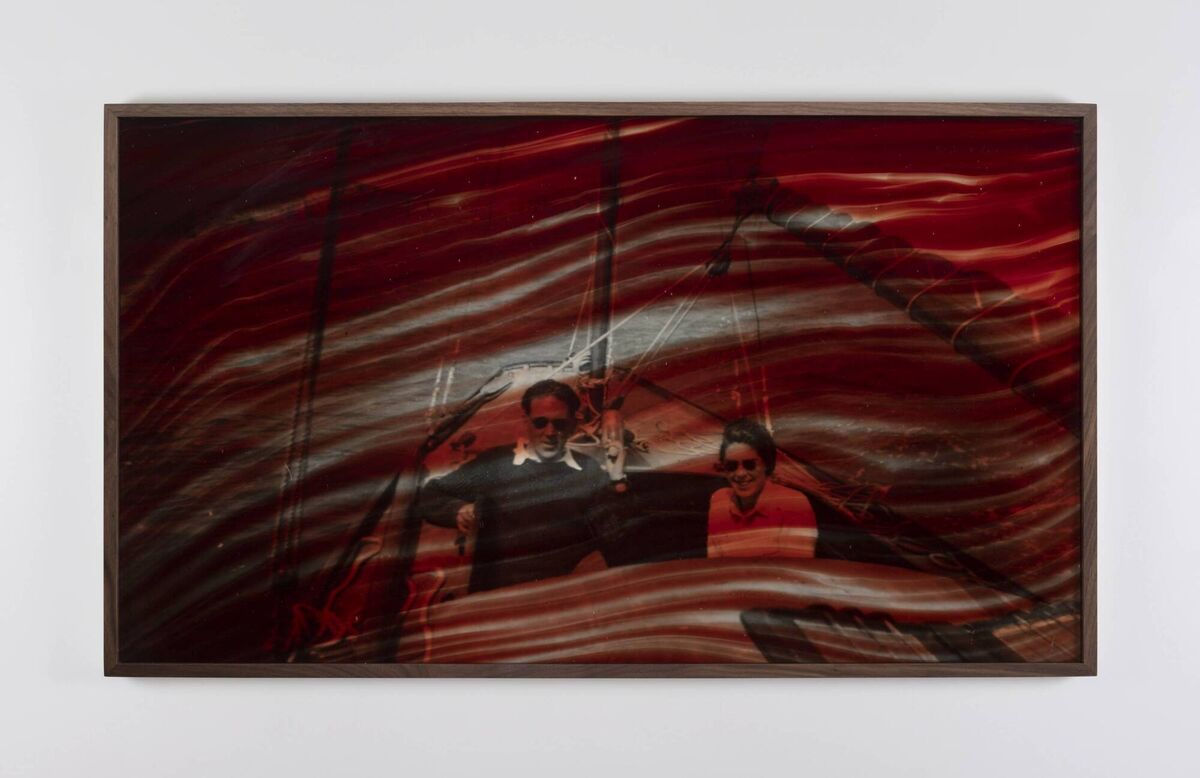
Cross often incorporates items associated with her family into her work. One of the pieces in the Veins of Other exhibition is called 'Boy holding scarab beetle' and consists of a cast bronze hand and a gold plated cast of a beetle. “The beetle was gifted to me by my aunt, May O’Donovan, when I was working in her basement — in Montenotte in Cork — more than forty years ago. May was the one who told me about the Egyptian mummy at UCC.”
This mummy — of a man who was probably a priest — is believed to be 2,000 years old, and has been in the university’s possession since 1928. Some years ago, when Cross made enquiries as to its whereabouts, she discovered it was being held in storage at Letterfrack, a five-minute drive from her home.
Working with the arts producer Mary Hickson, poet John Fitzgerald and curator Maeve-Ann Austen, she began making plans to return it to Egypt, a project that will eventually include the production of a film and a book, featuring essays by — amongst others — the British-Libyan author of , Edmund de Waal, and the Egyptian author of , Ahdaf Soueif.
“The Egyptians believed the sun was rolled across the heavens by a scarab beetle,” says Cross, “so I had the idea for this new work at the Kerlin that the sun would roll into the little boy’s hand. I think it relates to the Kinship project in a sense.” The Kinship project has been delayed again and again by the bureaucracy involved in arranging the mummy’s transport to Egypt.
“But this is a story that needs to be told,” says Cross. “It’s not about repatriation, but restitution. The way it stands at the moment is that the mummy is crated in a warehouse at UCC, and the university is all on board. But we need one last signature from the inner sanctum of the Egyptian museum authorities before we can start its journey home.”
- Further information: dorothycross.com/editions

